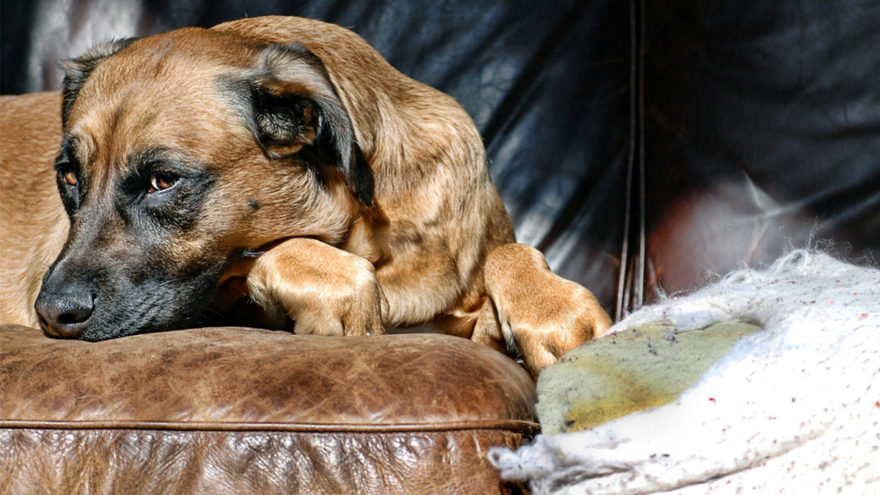Separation anxiety is very common in rescue dogs since their previous owners often abandoned them. Even if your new rescue dog didn’t develop separation anxiety from their previous owner, it is still possible they can develop it once their new owners start leaving them alone.
Pets can sometimes become upset because of separation from their guardians and act out, leading to household destruction, self-injury, etc. It can be challenging to train a dog with separation anxiety, but it is definitely possible with consistent training techniques.
Training A Rescue With Separation Anxiety
Separation anxiety is not an easy issue to tackle alone. It’s recommended to speak with a Certified Separation Anxiety Trainer (CSAT) who has the expertise to get results with dogs that suffer from separation anxiety. There are a ton of benefits to working with a certified separation anxiety trainer, such as:
- Virtual training is offered via zoom or facetime.
- The ability to work with the most qualified dog trainers in your area.
- Fewer distractions for your pet, where they will remain in a familiar environment with their owners.
Rescue’s can be harder to train because they are usually older and have already learned bad habits from their previous owner. This is not an impossible task though, and can certainly be successful with the proper training.
Common Signs of Separation Anxiety
Dogs with separation anxiety will typically misbehave when they are left alone. Dogs should never be left alone for long periods of time, but they should be able to stay home alone for a few hours without damaging the house, trying to escape, or injuring themselves. Some other signs of separation anxiety include:
- Urinating and Defecating – If your dog makes a habit of urinating or defecating specifically when you are not around, it could be due to separation anxiety. If they do the same in your presence, it is probably not related.
- Barking and Howling – Constant barking and howling, specifically triggered by being left alone, may indicate separation anxiety.
- Pacing – If a dog walks in a fixed pattern when left alone, it may indicate separation issues.
- Chewing and Destructive Behavior – Chewing and other destructive behavior may be indicative of a number of problems, but if it only occurs when a dog’s guardian is not present, separation anxiety should be considered.
If you notice any of these behaviors consistently, it is likely you are dealing with dog separation anxiety and waiting to address the issue may only make it worse. Dealing with the problem as soon as possible will make the training much quicker and easier, and improve the relationship between you and your pet.
Should You Crate Train a Dog With Separation Anxiety?
While crate training can help some dogs feel safe and comfortable, dogs with separation anxiety often have that behavior exacerbated by being put in a crate. Simply put, crate training a dog dealing with separation anxiety is not suggested and will not help change the underlying causes that are making your dog anxious when you’re not around.
Contact Us About Rescue Dog Training in NJ & NY
Training an anxious rescue pup can be difficult, and here at Michael’s Pack we are certified and experienced in helping your dog overcome their separation anxiety. Contact Michael’s Pack today to schedule a virtual training session in New Jersey or New York for separation anxiety.
Michael Schaier, the founder and CEO of Michael’s Pack, has completed the CSAT (Certified Separation Anxiety Trainer) program. This program places a heavy emphasis on helping dogs deal with separation anxiety, which is one of the most difficult behaviors to work with when it comes to dogs. Only a select few dog trainers in the country have earned this certification. We provide convenient, professional virtual separation anxiety training that works around your schedule.

